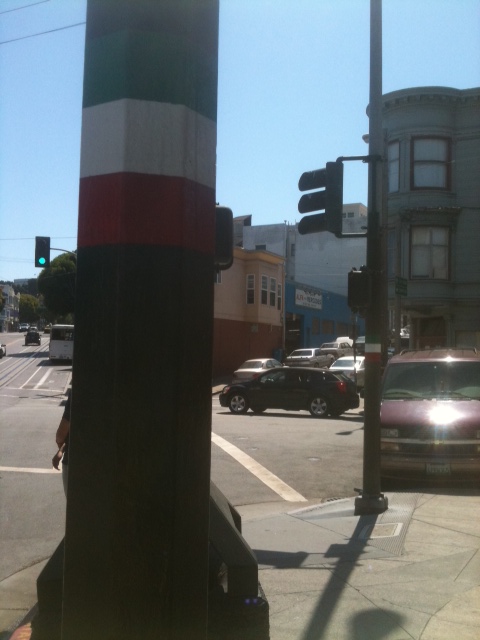While walking in San Francisco recently, I realized I’d arrived in Little Italy by the Italian-themed stripes on the light poles. It was a simple idea, but the coordination of so many poles made me feel that the area’s merchants really had their acts together.

After a nice Italian dinner, I started thinking about what theme my rental complex was transmitting. What theme where my tenants, their visitors, and those that looked at my Craigslist ads seeing? Was I inspiring them to do business with me?
In a recent survey, my tenant’s responses suggest they feel safe in the neighborhood. So we’re in the “belonging” stage of Maslow’s hierarchy of needs.
It’s definitely time to battle future vacancies by improving curb appeal.
Battle Future Rental Vacancies by Improving Curb Appeal
In 2012, my cash flow suffered due to high vacancy rates; I just couldn’t find a good tenant. My rental vacancy rate was 17%! That’s $9,700 of lost potential income.
If my complex made a stronger first impression, it may have cut my rental’s vacancy rate by one-third. In hindsight, I really believe I could have earned an extra $3,200 last year.
If you’re facing a high vacancy rates, you may not feel like spending any money at all. I know the feeling. But please consider putting your feelings aside and investing in curb appeal.
By this I mean, invest in a project that would help your rental make a better first impression and lease up faster. If you pick a clever project, the additional rent you capture might pay for it.
How Much to Invest in Curb Appeal per Year?
Here’s an example of how to calculate the ideal amount to invest to reduce your rental vacancy rate.
Let’s say your rental’s vacancy rate is 15% and you predict a curb appeal project might reduce it by one-third (therefore your curb appeal reduction factor = 0.33).
Let’s also assume your annual gross rents are $57,000 and you’d be willing to invest your money if you could make a 20% profit.
OK, based on those assumptions, the following equation suggests your annual curb appeal investment should not exceed $2,351:
|
[Gross Rents Possible] x [Typical Vacancy Rate] x [Curb Appeal Reduction Factor] / [1 + Profit Margin] |
| ($57,000 *0.15 * 0.33) ÷ (1 + 0.20) = $2,351 |
How to Phase in a Vacancy Reduction Project?
In my case, it’ll likely cost around $3,500 to build out my landscape plan. My computed maximum investment happens to be $2,351 per year, which is less than what’s needed. So that tells me I need to phase in the project over two years.
In the past, the idea of an optional $3,500 capital improvement would have paralyzed me. Now that I have this guide, I can move forward with confidence.
Take Aways
Buying down your rental vacancy rate makes a lot of sense.
In my case, using a 10% capitalization rate, my property value increases by $4,260 for every 1% reduction in my vacancy rate.
How about you? How are you going to battle your rental’s vacancy rate?
You may also enjoy reading:
